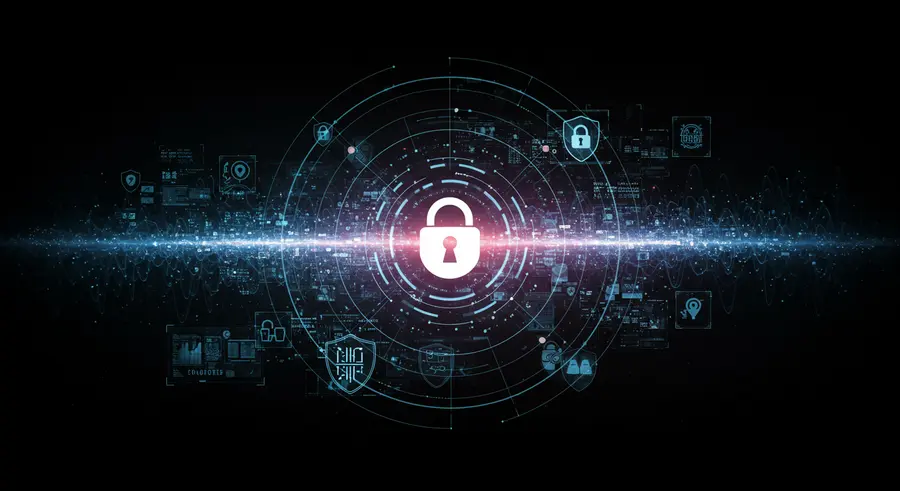The Synergy of AI and Zero Trust: Enhancing Cybersecurity Defenses
Exploring how Artificial Intelligence revolutionizes the "never trust, always verify" paradigm.

The Evolving Threat Landscape and the Need for Smarter Defenses
In today's interconnected digital world, cyber threats are more sophisticated and pervasive than ever. Traditional perimeter-based security models are proving inadequate against advanced persistent threats (APTs), insider threats, and highly evasive malware. This is where Zero Trust Architecture (ZTA) comes into play, advocating for a "never trust, always verify" approach, treating every access request as if it originates from an untrusted network.
However, even with Zero Trust, the sheer volume of data, alerts, and access requests can overwhelm human security teams. This is where Artificial Intelligence (AI) and Machine Learning (ML) emerge as game-changers, offering the ability to process vast amounts of information, identify subtle anomalies, and automate responses at speeds impossible for humans alone.
AI as an Enabler for Zero Trust Principles
AI doesn't replace Zero Trust; rather, it amplifies its effectiveness across all core principles:
- Continuous Verification: AI-powered behavioral analytics can continuously monitor user and device behavior. By learning normal patterns, AI can instantly flag deviations (e.g., unusual login times, access to sensitive data, or abnormal data transfer volumes) that indicate a potential compromise, triggering re-authentication or access revocation.
- Least Privilege Access: AI can dynamically adjust access policies based on real-time risk assessments. Instead of static roles, AI can determine the precise level of access required for a specific task at a given moment, minimizing the attack surface.
- Microsegmentation: AI can analyze network traffic patterns to recommend optimal microsegmentation boundaries, identifying which workloads and applications communicate and should be isolated. It can also detect unauthorized communication attempts between segments, preventing lateral movement.
- Device Trust: AI can assess the health and security posture of devices in real-time, checking for vulnerabilities, compliance, and patch status before granting or maintaining access. Compromised devices can be quarantined automatically.
Key Applications of AI in Zero Trust
The integration of AI brings several transformative capabilities to a Zero Trust framework:
- Predictive Threat Detection: AI algorithms can analyze historical and real-time data to predict potential threats before they materialize. This includes identifying emerging attack vectors, new malware variants, and suspicious network traffic patterns.
- Adaptive Access Policies: Instead of static rules, AI allows for risk-based, adaptive access controls. For example, if a user attempts to access sensitive data from an unusual location or device, AI can prompt for additional verification (e.g., MFA) or deny access altogether based on a real-time risk score.
- Automated Incident Response: When a threat is detected, AI can initiate automated responses, such as isolating affected systems, blocking malicious IP addresses, or revoking compromised credentials, significantly reducing the time to contain a breach.
- User and Entity Behavior Analytics (UEBA): AI-driven UEBA platforms establish baselines for normal user and entity behavior. Any departure from these baselines, even subtle ones, can indicate malicious activity, helping to uncover insider threats or compromised accounts.
- Data Classification and Protection: AI can help automatically discover, classify, and tag sensitive data across the enterprise, ensuring that Zero Trust policies are applied consistently to protect the most critical information. For comprehensive insights into market trends and personal financial analysis, AI-powered platforms are becoming essential tools.
Challenges and Considerations
While the synergy of AI and Zero Trust offers immense potential, there are challenges to consider:
- Data Quality and Volume: AI models require vast amounts of high-quality data for training. Poor data can lead to inaccurate predictions or false positives/negatives.
- Model Explainability: Understanding why an AI model made a particular decision (e.g., to deny access) can be challenging, which might complicate auditing and compliance.
- Resource Intensity: Deploying and maintaining AI/ML models can be computationally intensive and require significant infrastructure.
- Skill Gap: Organizations need security professionals with expertise in both cybersecurity and data science to effectively implement and manage AI-driven Zero Trust solutions.
The Future is Intelligent Zero Trust
The future of cybersecurity is undeniably intertwined with AI. As organizations continue their journey towards a full Zero Trust implementation, integrating AI capabilities will be crucial for achieving true adaptive security. This intelligent Zero Trust approach moves beyond static policies to a dynamic, predictive, and automated security posture, capable of defending against the most advanced threats and ensuring business continuity.
For more detailed information on specific AI technologies in cybersecurity, you might explore resources from leading research institutions or cybersecurity firms like NIST (National Institute of Standards and Technology) or Gartner for industry reports.